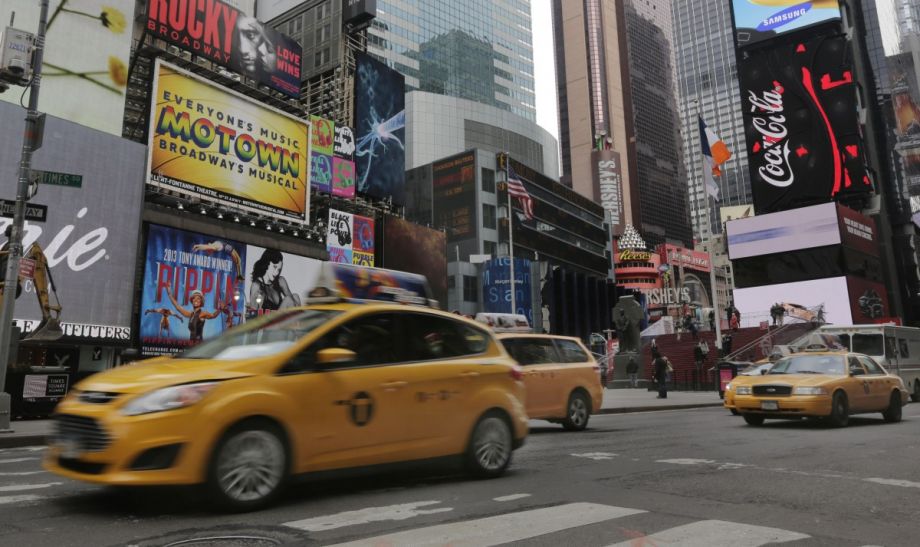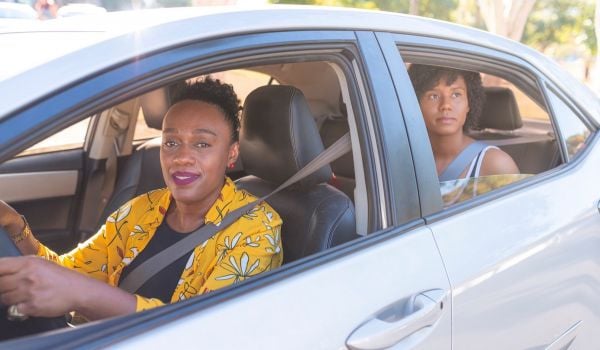Carpooling probably isn’t as American as apple pie, but it used to be a far more common practice, in part thanks to government campaigns encouraging people to share the ride. During World War II, propaganda posters admonished citizens that “when you ride alone, you ride with Hitler!” During the 1970s energy crisis, the Department of Energy produced PSAs extolling carpooling’s virtues (hip to the times they declared, “No Fuelin’, We’re Poolin’.”) In 1980, 20 percent of commuters carpooled to work, a figure that’s steadily declined in the decades since to under 10 percent.
Though more analogous to splitting a cab than carpooling, services such as Uber Pool and Lyft Line have helped bring the idea of ride-sharing back into the mainstream. And while some reports show that city street grids are struggling to accommodate the popularity of these transportation network companies and the resulting increase of cars on the road, increasing the number of people moving in each car would increase the efficiency of the services.
That question of efficiency and shareability was at the heart of a recent study by MIT researchers. They looked at the number of taxi trips taken and their average speed in New York, San Francisco, Singapore and Vienna to create a formula for determining the shareability of car trips.
“Cars are idle 95 percent of the time, and when they are on the road, they are less than 50 percent full [on average], so they are an ideal candidate for the sharing economy,” says Carlo Ratti, director of MIT’s SENSEable City Lab, and co-author of “Scaling Law of Urban Ride Sharing.” “Thanks to smartphone technology and ubiquitous connectivity we can now share mobility in a way that would have been impossible just a few years ago.”
The factors that make a ride shareable for two or more people are common sense. The origin and destination for a set of trips must be near each other and the rides must be happening at close to the same time. The researchers’ mathematical model found that those things occur surprisingly often.
Rides in Manhattan are shareable a whopping 99 percent of the time, they found, thanks in large part to the borough’s density and large population. Perhaps surprisingly, they found that almost 97 percent of rides were shareable in San Francisco, Singapore and Vienna. Ratti says a possible explanation is that people in cities often follow similar daily travel patterns (from residential neighborhoods to downtown jobs and back, for example), so density doesn’t completely dictate shareability.
Ratti’s vision for shareability goes beyond Uber and Lyft’s existing ride-splitting options. He thinks technology could easily enable people to share Car2Go, ZipCar and traditional taxis.
Of course potential shareability and how many people are actually willing to share their ride with a stranger are two very different things. Data on the number of people using Uber Pool versus solo Uber use is hard to come by. According to Uber, 1 in 4 users chose Uber Pool during last year’s Metro shutdown in D.C., but Uber was promoting it and incentivizing the service with guaranteed cheaper fares.
Ratti thinks that sort of encouragement will be key to getting strangers to share their rides. “Pricing and incentives can go a long way,” he says.
Even with the growing use of shared rides in Uber and Lyft and others, app-based ride hiring services may still have a net negative impact on congestion — after all, cars filled to capacity still can’t move as many people as buses and trains at capacity. In his recent report on the impact of on-demand ride companies on New York City, Bruce Schaller says, “most TNC customers are coming from transit, walking and biking. Migration from public transit translates to increased mileage even if the trips are shared.”
Unsurprisingly for a researcher interested in technology and transportation, Ratti is already looking beyond the ways in which smartphones and apps can impact our current transportation options. Autonomous vehicles may transform urban mobility in the future for good or bad.
In one scenario, Ratti imagines autonomous cars shared by strangers drastically reducing the number of vehicles needed and increasing the efficiency of travel. In another he imagines, “self-driving vehicles usher in a dystopian scenario, whereby car transportation becomes so cheap that it will drain customers from subways and buses, effectively turning our streets into a giant gridlock.”
“As always, the choice will be with us, the citizens,” he says.

Josh Cohen is Crosscut’s city reporter covering Seattle government, politics and the issues that shape life in the city.
Follow Josh .(JavaScript must be enabled to view this email address)











